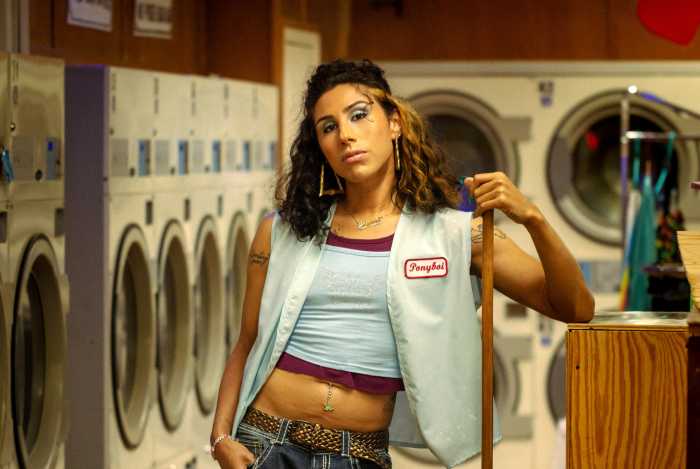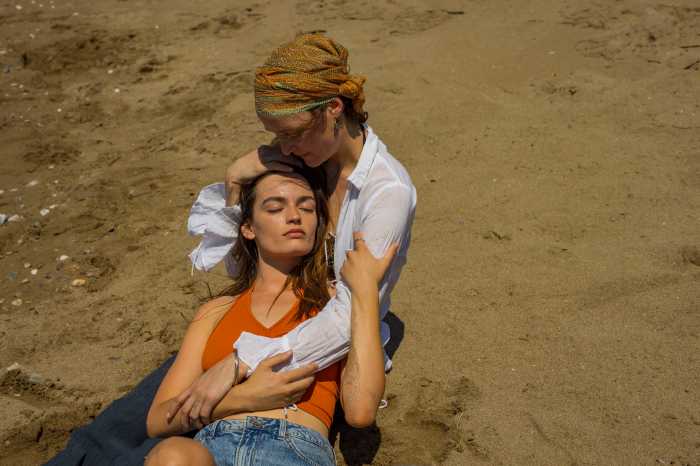Andrea Pallaoro’s “Monica” devises its entire style to contain family secrets. Its entire plot is about the long-term effects of betrayal: Monica (trans actor Trace Lysette), a trans woman, returns to her hometown to help take care of her dying mother (Patricia Clarkson), who threw her out of the house years ago. It’s shot in a narrow, exactly square aspect ratio that boxes the characters in. Pallaoro’s framing carefully keeps their faces and bodies a mystery. When Monica and her sister-in-law Laura (Emily Browning) first meet, both of their heads are cut off by the shot. Rather than filming close-ups head on, he often shoots the actors from behind or in profile. Even scenes of nudity and sex are designed to avoid the male gaze and staring at Monica’s body. But in the end, it adds up to an under-written film that functions as a giant box to keep emotions down.
In the opening scene, Monica sits in a tanning bed, listening to New Order’s “Bizarre Love Triangle” and preparing her body for her work as a webcam model. Despite her ex-boyfriend Jimmy’s pleas not to call him, she does so anyway. Laura then calls Monica, who lives in Los Angeles, to let her know that her mother Eugenia is on her deathbed. Although Eugenia never accepted Monica as a trans woman, her dementia leads her to take Monica for a stranger. Monica pretends to be a hospice nurse. Speaking to Monica’s brother (Joshua Close), Eugenia looks back on her memories of “the boys.” Despite her pain, Monica dutifully takes care of Eugenia, never confronting her. She reacts in awkward ways, heading to a bar for a planned hook-up with a guy who ghosts her.
Low-key depression and weariness permeate “Monica.” The film’s look is dictated by it. Stood up by a man who fetishizes her for being trans, Monica stands in the green light outside a bar and leaves two angry voice-mail messages. The camera keeps its distance, avoiding close-ups. Pallaoro succumbs to the idea that dark visuals equal moody emotions. While one can understand why a woman suffering from dementia would lie in bed with the lights off, the cinematography avoids letting the audience see anyone too clearly.
On some level, Pallaoro’s choices reflect a laudable desire to avoid objectifying Monica. The film demonstrates that she’s had a rough life, persisting up to the present. But the avoidance of emotional expression begins to feel performative. Most scenes are held a beat too long. The actors speak as though their sentences end with ellipses. While the style opens up a bit near the end, the deliberate drabness isn’t nearly as powerful as the film wants it to be.
Monica’s love of pop music supplies the only real moments of pleasure. She dances alone to a European dance track. Later, she’s shown driving to the tune of Pulp’s “Common People,” as the film plays out most of the song. While Jarvis Cocker sings about his resentment of the rich woman who picked him up, Monica drives quickly and silently through the fields outside Cincinnati. We see the landscape through her windshield, then the side of her face, but while we have to guess at what she may be thinking, the song helps spell it out.
By the time “Monica” suggests an unspoken reconciliation between Monica and Eugenia, despite the pain the mother has caused, its visual language has come to feel like a parody of a ‘60s European art film. It adopts certain festival cinema clichés (few close-ups, slow pacing, ostentatious framing) but struggles to express much through them. The 113-minute runtime suffers from a lack of incident. “Monica” centers its trans hero’s pain without exploiting or wallowing in it, but that balance is so difficult and delicate that the film itself, rather than its characters, suffers from an icy overload of restraint.
“Monica” | Directed by Andrea Pallaoro | IFC Films | Opens at the IFC Center May 12th



































